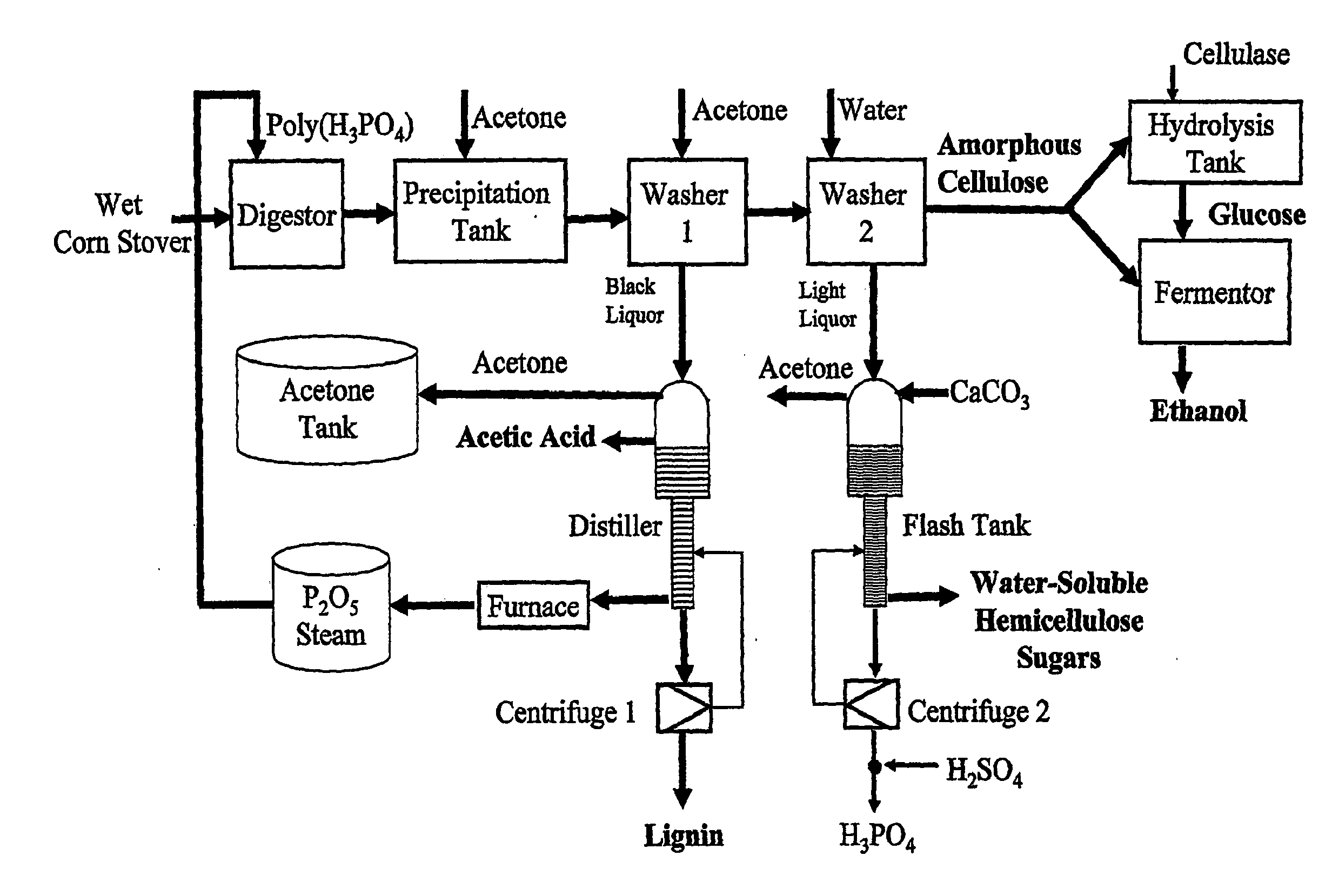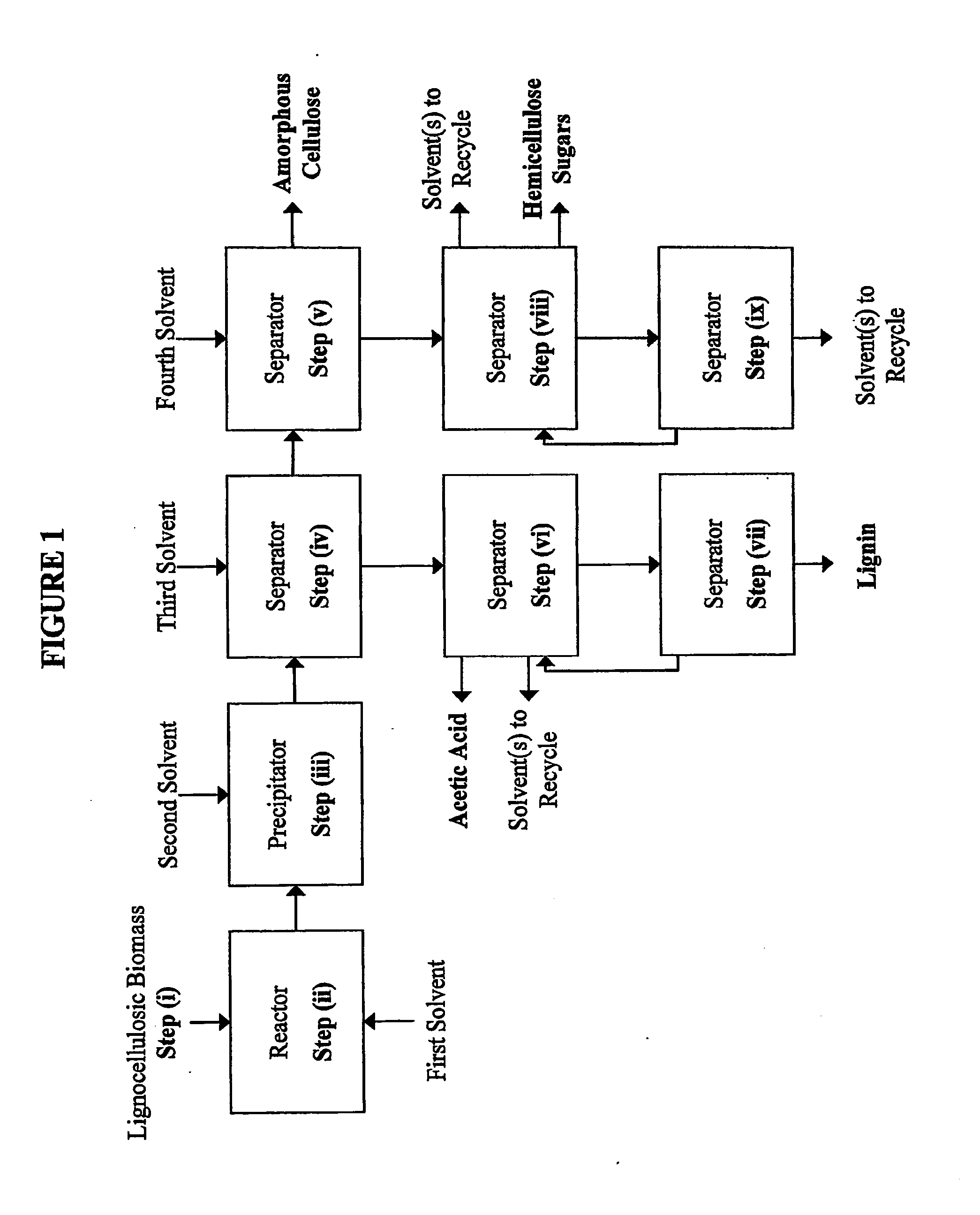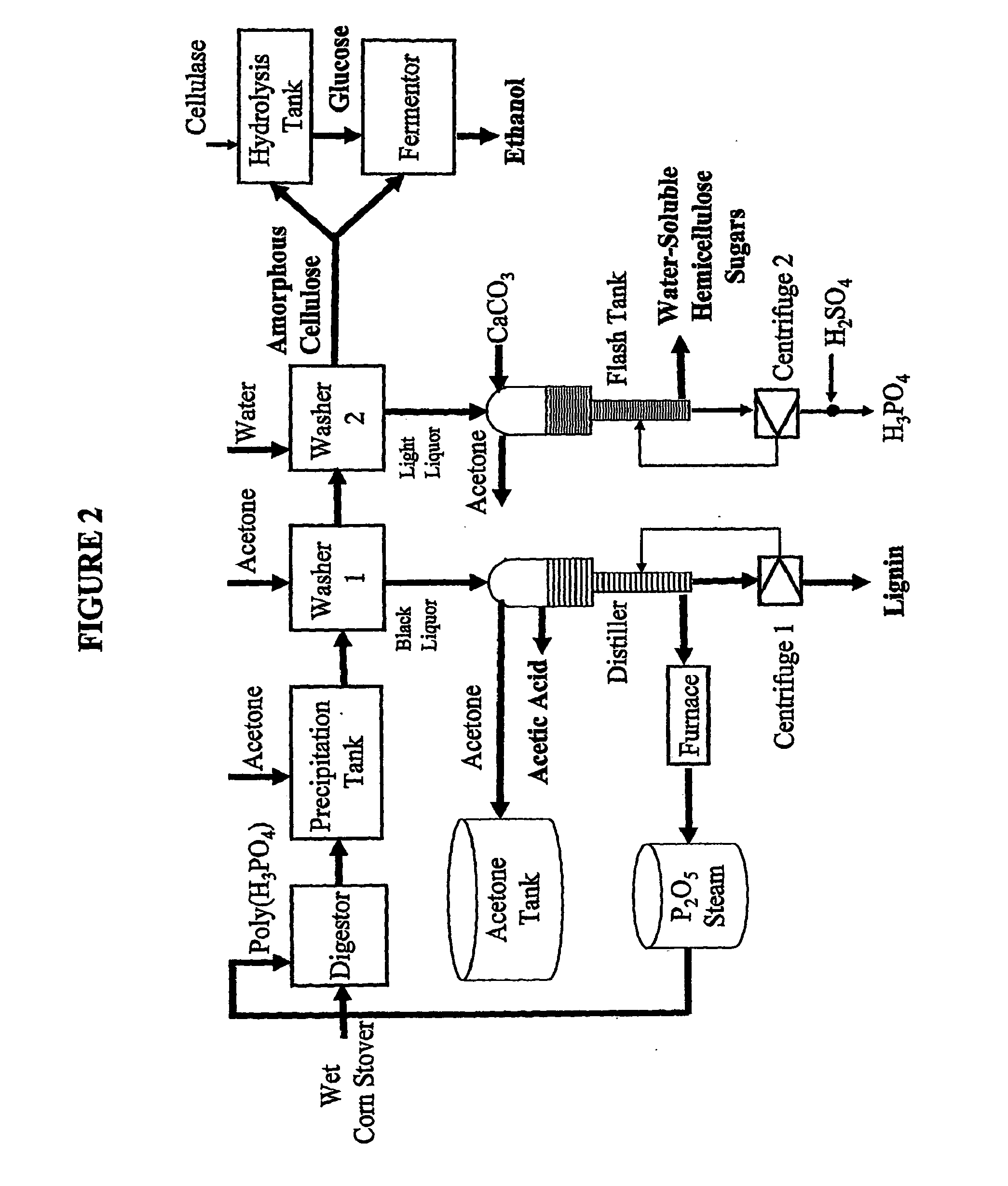Cellulose-solvent-based lignocellulose fractionation with modest reaction conditions and reagent cycling
a technology of cellulose and solvent, which is applied in the direction of glucose production, pressurized chemical process, biofuels, etc., can solve the problems of low yield of glucose, low conversion rate of hemicellulose, and loss of pentose carbohydrates (csub>5 /sub>sugar) from the hemicellulose fraction, etc., to achieve low capital and operating costs and easy conversion
- Summary
- Abstract
- Description
- Claims
- Application Information
AI Technical Summary
Benefits of technology
Problems solved by technology
Method used
Image
Examples
example
[0254]FIG. 2 shows a simplified process-flow diagram for the present example of continuous fractionation of corn stover into amorphous cellulose, hemicellulose sugars, lignin, and acetic acid, according to the methods of the invention. The first solvent is polyphosphoric acid (“Poly(H3PO4)” in the diagram), the second and third solvents are acetone, and the fourth solvent is water.
[0255]Corn stover (at about 50 wt % moisture) is fed into a pretreatment reactor (the “digestor”) along with recycled polyphosphoric acid, which is present in the digestor at about 86 wt % H3PO4 (equivalent). The ratio of solvent to solids in the digestor is about 5. The mixture is allowed to react at about 50° C. for approximately 30 minutes (residence time) under atmospheric pressure. No heat input is needed during this step because mixing of concentrated acid with water is a weakly exothermic reaction. The polyphosphoric acid not only breaks linkages among lignin, hemicellulose, and cellulose, but also ...
PUM
| Property | Measurement | Unit |
|---|---|---|
| flexible | aaaaa | aaaaa |
| chemically stable | aaaaa | aaaaa |
| flexibility | aaaaa | aaaaa |
Abstract
Description
Claims
Application Information
 Login to View More
Login to View More - R&D
- Intellectual Property
- Life Sciences
- Materials
- Tech Scout
- Unparalleled Data Quality
- Higher Quality Content
- 60% Fewer Hallucinations
Browse by: Latest US Patents, China's latest patents, Technical Efficacy Thesaurus, Application Domain, Technology Topic, Popular Technical Reports.
© 2025 PatSnap. All rights reserved.Legal|Privacy policy|Modern Slavery Act Transparency Statement|Sitemap|About US| Contact US: help@patsnap.com



